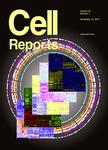版权所有:内蒙古大学图书馆 技术提供:维普资讯• 智图
内蒙古自治区呼和浩特市赛罕区大学西街235号 邮编: 010021

作者机构:Inst Syst Biol Seattle WA 98109 USA Univ Maryland Inst Genome Sci Sch Med Baltimore MD 21201 USA Univ Maryland Med Scientist Training Program Sch Med Baltimore MD 21201 USA Univ Chicago Globus Chicago IL 60637 USA Mayo Clin Dept Neurosci Jacksonville FL 32224 USA Univ Southern Calif Mark & Mary Stevens Neuroimaging & Informat Inst Los Angeles CA 90033 USA Univ Southern Calif Dept Psychol Los Angeles CA 90007 USA Univ Southern Calif Informat Sci Inst Los Angeles CA 90292 USA Argonne Natl Lab Data Sci & Learning Div 9700 S Cass Ave Argonne IL 60439 USA Univ Maryland Sch Med Dept Psychiat Baltimore MD 21201 USA
出 版 物:《CELL REPORTS》 (细胞报告)
年 卷 期:2020年第32卷第7期
页 面:108029-108029页
核心收录:
学科分类:0710[理学-生物学] 07[理学] 071009[理学-细胞生物学] 09[农学] 0901[农学-作物学] 090102[农学-作物遗传育种]
基 金:BDDS Center of the NIH Big Data to Knowledge program [U54 EB020406] National Institute of Aging [U01 AG046139, RF1 AG057443] National Institute for General Medical Sciences Center for Systems Biology at the Institute for Systems Biology [P50 GM07654] national Brain Research through Advancing Innovative Neurotechnologies (BRAIN) Initiative [R24MH114788, R24MH114815] national Brain Research through Advancing Innovative Neurotechnologies (BRAIN) Initiative (National Human Genome Research Institute) [5R01HG009018] National Institute of Mental Health [F30 MH120910]
主 题:footprinting transcription factors gene regulation motifs ENCODE DNase-seq psychiatric genetics
摘 要:Characterizing the tissue-specific binding sites of transcription factors (TFs) is essential to reconstruct gene regulatory networks and predict functions for non-coding genetic variation. DNase-seq footprinting enables the prediction of genome-wide binding sites for hundreds of TFs simultaneously. Despite the public availability of high-quality DNase-seq data from hundreds of samples, a comprehensive, up-to-date resource for the locations of genomic footprints is lacking. Here, we develop a scalable footprinting workflow using two state-of-the-art algorithms: Wellington and HINT. We apply our workflow to detect footprints in 192 ENCODE DNase-seq experiments and predict the genomic occupancy of 1,515 human TFs in 27 human tissues. We validate that these footprints overlap true-positive TF binding sites from ChIP-seq. We demonstrate that the locations, depth, and tissue specificity of footprints predict effects of genetic variants on gene expression and capture a substantial proportion of genetic risk for complex traits.